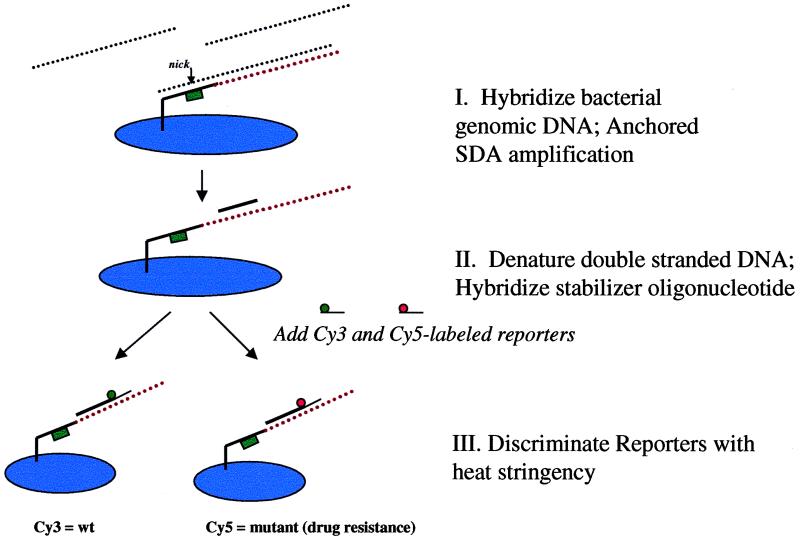FIG. 1.
Schematic representation of anchored SDA and bacterial discrimination. Biotinylated SDA amplification primer sets are first addressed to spatially distinct areas on the microchip array using electronic biasing. Templates are then electronically hybridized to the SDA primer sets, and the SDA reaction is performed in situ with the addition of bumper primers and reaction reagents to the microchip (panel I). The amplification primers contain a BsoBI restriction endonuclease site, essential for SDA. The bumper primers (not shown) are needed only to remove the initial primer extension product from the target template, allowing the primer-extended strand to bind to its complementary amplification primer. Primer extension of the complementary amplification primer and subsequent incorporation of a thiolated nucleotide (dCTP) over the BsoBI site induce nicking by BsoBI in the amplification primer region. The presence of a nick signals polymerase binding and simultaneous strand displacement-primer extension, resulting in exponential amplification of the target DNA. The SDA reaction is stopped by removal of the supernatant, double-stranded DNA products are denatured on the microchip, and internal reporters are hybridized to the amplicon products remaining on the chip (panel II). Discrimination is performed by increasing heat (thermal stringency) until only one reporter species (Cy3 or Cy5) remains (panel III). wt, wild type.

